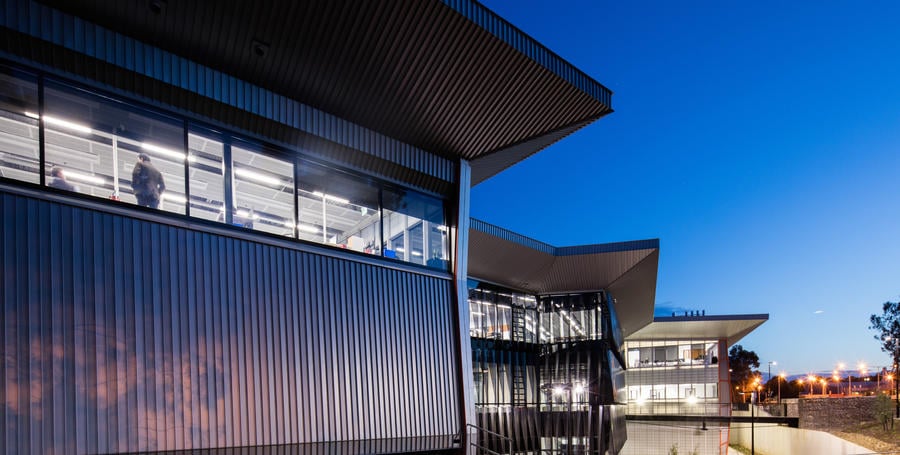
The prototype of the art installation utilizes colored light, sound and artificial intelligence to translate data produced by house plants into an artistic experience. A recent grant will help to scale the prototype pictured here into a full art installation. Photo courtesy of Johnny DiBlasi. Larger image.
AMES, Iowa – Humans from the very beginning have found beauty in the rhythms of nature, but one Iowa State University professor is turning the data produced by plants and the environment into a literal work of art.
Johnny DiBlasi, an assistant professor of art and visual culture, recently received a $10,000 grant from the Iowa Arts Council to develop “Transcoded Ecologies,” a project that fuses artificial intelligence and plant biodata into an art installation that incorporates light and sound. The concept involves sensors that track data produced by tree saplings and an artificial intelligence program that translates the data into a dynamic artistic experience.
DiBlasi said the experimental project creates an “alternative ecological awareness” in the audience, directing their attention to their environment and the various organisms with whom they share it. The project points to the basic truth that humans are interconnected with an intricate web of other living things, he said.
“I like there to be a plurality of narratives, experiences, understandings and meanings,” he said. “When I present a work to an audience, I like that the audience can interpret it in different ways, and everybody can take away something different.”
Transcoded Ecologies grew out of data he gathered from plants in public parks and forests in Austria as part of a Fulbright fellowship from February to May of 2021. DiBlasi recently constructed a prototype involving a few houseplants encased in a lightbox. Sensors monitored environmental conditions such as temperature and light as well as plant respiration rates. The artificial intelligence analyzes cycles in the data, what DiBlasi refers to as “time series,” and emits colored lights and a gentle, low-frequency pulsing sound that changes in pitch depending on trends in the plant data. The prototype was exhibited for about a week during the summer of 2022 at Reliable Street, an arts space in Ames.
The Iowa Arts Council grant will help DiBlasi scale up the project from the smaller prototype and fine tune the artificial intelligence. To create the AI model, he connects remotely to large computers located in data centers in different areas of the country. DiBlasi imagines the finished installation will utilize tree saplings that can be set up in a studio or art gallery. He’s set a timetable of eight to ten months to have the project ready for installation and to exhibit the artwork in an appropriate venue such as an arts center. He’ll consider ways to make the technology portable so the installation could travel to multiple venues.
DiBlasi has a history of turning biology into art. When he arrived at Iowa State roughly five years ago, he began exploring the potential of culturing bacteria into intricate patterns. The project made use of a robotic arm to feed the bacteria in precise locations, shaping the culture into the desired formation. The resulting bacterial cultures took on complex shapes that look far more like geometric art than a colony of living organisms.
DiBlasi cofounded a research and arts collective called [phylum] with two interdisciplinary artists based in New York who share his interest in exploring the aesthetics of data. He said the group takes a playful and experimental approach to science, technology and living systems to find new means of artistic expression.
“Painters paint. Sculptors work with wood and metal. I want to work with biodata and technology. That’s my medium,” DiBlasi said.








